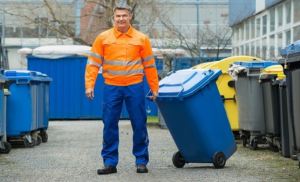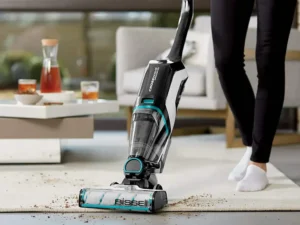Insulation is a key component of any home. If your current insulation isn’t doing its job, it’s important to consider a new installation.
However, removing old insulation is best left to professionals if your attic space contains hazardous materials like mold, rodent feces, or asbestos. The insulation must be bagged and disposed of properly if these contaminants are present. Visit Website to learn more.

Blown in insulation is a common choice for homeowners seeking to improve their home’s energy efficiency. This loose-fill type of insulation is typically made from cellulose or fiberglass materials, and it gets its name from the process of installation in which it’s “blown” into wall cavities, attics, and crawl spaces. The main reason to get blown-in insulation replaced is because of mold issues and rodent damage, but inconsistencies in temperature can also be linked to old insulation.
Prior to insulation removal, it’s important for homeowners to take necessary safety precautions to protect themselves from the dust, allergens, and toxins created during the process. A face mask and gloves are recommended, as well as a respirator to limit exposure to airborne contaminants. During the process, it’s also important to block off areas where furniture or equipment may be positioned to avoid contamination.
As the insulation is removed, it’s important to keep the attic area clear to prevent re-contamination and potential debris buildup within your living space. Likewise, homeowners should spread plastic over furniture and other items in the living spaces to protect them from the mess. It’s also helpful to have a trailer on hand to transport full bags of contaminated insulation to the local dump.
The preferred method of removing blown-in insulation is by machine, using a vacuum to safely and quickly suck the material from the attic space. This allows professionals to work faster and more efficiently, reducing the risk of contamination of the rest of your home.
A professional insulation contractor will start by prepping the attic, sealing the attic access door, and removing any obstructions from the ceiling and walls. They will then mount the vacuum in a safe place, and begin sucking up the old insulation. It’s a messy process, so the insulation is bagged and placed into a dumpster as it’s removed. After the cleanup, they will check for any lingering moisture or pest problems and install a vapor barrier to ensure the attic space is dry and healthy. The attic should be inspected to ensure the proper ventilation is in place, as well as the presence of electrical wiring to prevent fire hazards.
Fiberglass batt insulation is often found in older homes. It is a common form of insulation for wall cavities, floor and ceiling joists, and rafters. This type of insulation is typically manufactured in widths to fit between wall studs and in thicknesses to meet R-value requirements. While this insulation is effective, it can deteriorate over time and may need to be replaced.
When it comes to removing fiberglass batt insulation, safety is the most important consideration. This is because fiberglass can degrade over time, releasing microscopic fiberglass particles into the air that can easily stick to skin and clothing. To avoid this, it is a good idea to wear long sleeves and pants, safety goggles, and a dust mask or respirator. This will help minimize direct contact and inhalation of the fiberglass particles.
Before starting to remove the insulation, you should shut off any power sources in the area. This will prevent any electrical or gas accidents while you are working. You should also clear out any items from the area to create a clean workspace. Finally, you should seal off the area with plastic sheets to prevent fiberglass particles from escaping during the removal process.
To begin removing the insulation, start by cutting into manageable sections. This will make it easier to handle and dispose of. A utility knife with a retractable blade is the best tool for this task. Make sure that you choose a blade that is sharp enough to cut through the insulation without breaking.
Once you have cut the insulation into sections, carefully pull each section away from the surface it is attached to. This will require some manual strength, so be careful not to damage the structure of your home. Once you have removed the insulation, place each section into a separate, sealed plastic bag or container for disposal.
Once you have removed all of the fiberglass batt insulation, you will need to dispose of it properly. This will involve following the guidelines provided by your local waste disposal facility or municipality. It is also a good idea to thoroughly wash your hands and launder any clothing that has come in contact with the fiberglass particles. This will ensure that any lingering fiberglass particles do not cause an allergic reaction.
Blown-in insulation, or loose-fill insulation, is made up of small particles of foam and fiber that are sprayed into walls and other cavities. It is commonly used in spaces that would be difficult to insulate with batt insulation or other materials. This type of insulation is a bit trickier to remove than fiberglass or foam boards, but it can be done with the right equipment and adherence to proper safety precautions.
As with other types of insulation, it is important to do a thorough inspection before beginning any loose-fill removal projects. This is particularly true of older homes that may have asbestos in the insulation. There are test kits that can be purchased and used to determine the presence of asbestos. If there is, a professional should be hired for removal to prevent exposure and health issues.
After a careful inspection, it is safe to proceed with removing loose-fill insulation from an attic. The first step is to clear the space and cover it with a heavy plastic sheet. The attic access door should be closed as well and sealed with an adhesive zipper. Next, a hose should be hooked up to the vacuum and the insulation will be sucked out of the wall cavities. This process should be repeated until the entire attic has been cleared of loose-fill insulation.
Once the insulation has been removed, it can be discarded or placed in a designated disposal area. Since the majority of loose-fill insulation is produced using recycled materials, it is a good choice for environmentally friendly applications. The most common types of loose-fill insulation include cellulose, fiberglass, and mineral (rock or slag) wool.
These products are generally blown in by experienced installers skilled at achieving the appropriate density and R-value. Other loose-fill insulation options include polystyrene beads, vermiculite, and perlite.
A final note: When working with a spray foam, be sure to wear a mask and protect your eyes. The chemicals can irritate your skin and lungs if inhaled for long periods of time. It is also a good idea to have a friend assist in the process to help with moving and storing the material.
Insulation keeps heating and cooling costs down, reduces noise, and prevents pests and rodents from nesting in walls and attics. However, older insulation can also promote allergies. This is because of the rodent droppings and urine that build up over time, which spread a foul odor throughout the living spaces and can affect indoor air quality by spreading bacterias that cause respiratory diseases. The CDC recommends having any rodent-contaminated insulation professionally removed and replaced to prevent the risk of exposure to these harmful contaminants.
Fortunately, modern cellulose insulation does not support rodent infestations. This is because the material is densely packed and not as loose as fiberglass batts. This makes it difficult for mice, squirrels, and raccoons to nest in the insulation. Additionally, borate-treated cellulose insulation kills bugs or repels them, making it an effective pest deterrent.
While newer insulating materials are resistant to rodents, they still do not stop rodents from entering homes through points where air migrates in and out of buildings such as wall cavities and penetrations. The best way to prevent pests from getting inside is to seal off these areas. This is why it’s important to have your home or commercial building inspected by a professional and have the necessary repairs made.
Older attic insulation can encourage raccoons, squirrels, and other pests to build nests. These creatures bring along a lot of junk from the outside, including leaves and twigs to use as nesting materials. Over time, this junk can lead to mold growth in the attic. It can also deteriorate the fiberglass insulation, making it less effective.
If you have a rodent problem, the CDC recommends calling a pest control company immediately. These professionals can deal with the rodents and their contaminated droppings and urine. However, they cannot guarantee that these rodents won’t come back in the future or that you won’t get a problem with other pests.
If you want to prevent pests from ruining your new insulation, schedule regular maintenance services with We can provide small repairs and perform insulation blow-ins to keep your home in good shape. Contact us today to schedule your free estimate for residential or commercial services.
Home Inspection
home insulation, residential insulation, home insulator, residential insulator, insulation services, insulation removal, insulation remover


